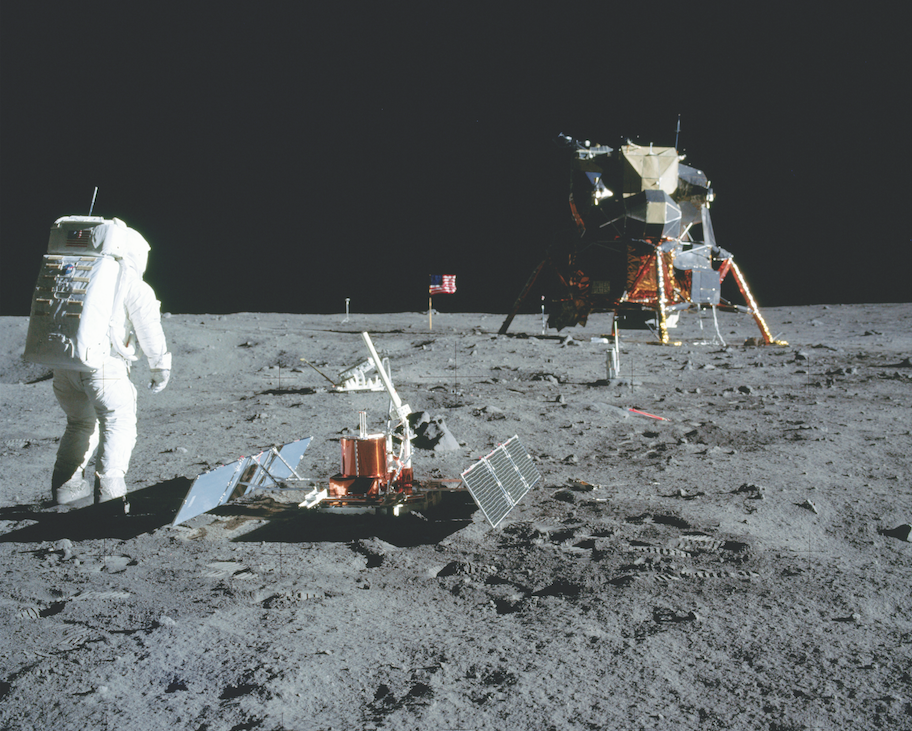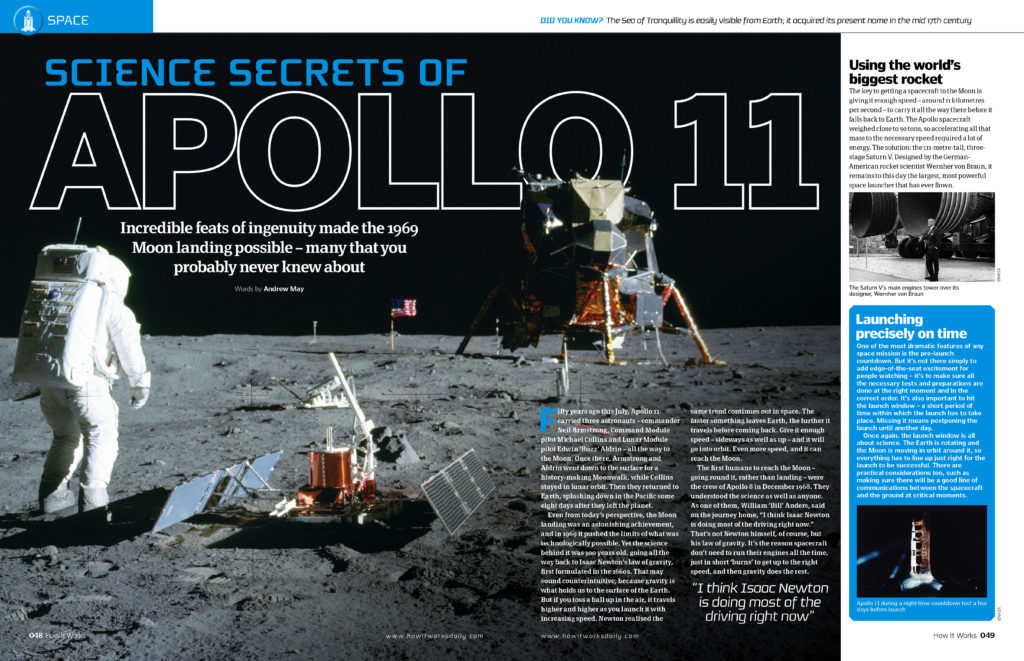Science secrets of Apollo 11
by How It Works Team · 20/07/2019

Incredible feats of ingenuity made the 1969 Moon landing possible – many that you probably never knew about
Fifty years ago this July, Apollo 11 carried three astronauts – commander Neil Armstrong, Command Module pilot Michael Collins and Lunar Module pilot Edwin ‘Buzz’ Aldrin – all the way to the Moon. Once there, Armstrong and Aldrin went down to the surface for a history-making Moonwalk, while Collins stayed in lunar orbit. Then they returned to Earth, splashing down in the Pacific some eight days after they left the planet.
Even from today’s perspective, the Moon landing was an astonishing achievement, and in 1969 it pushed the limits of what was technologically possible. Yet the science behind it was 300 years old, going all the way back to Isaac Newton’s law of gravity, first formulated in the 1660s. That may sound counterintuitive, because gravity is what holds us to the surface of the Earth. But if you toss a ball up in the air, it travels higher and higher as you launch it with increasing speed. Newton realised the same trend continues out in space. The faster something leaves Earth, the further it travels before coming back. Give it enough speed – sideways as well as up – and it will go into orbit. Even more speed, and it can reach the Moon…
This article was originally published in How It Works issue 127, written by Andrew May
For more science and technology articles, pick up the latest copy of How It Works from all good retailers or from our website now. If you have a tablet or smartphone, you can also download the digital version onto your iOS or Android device. To make sure you never miss an issue of How It Works magazine, subscribe today!






